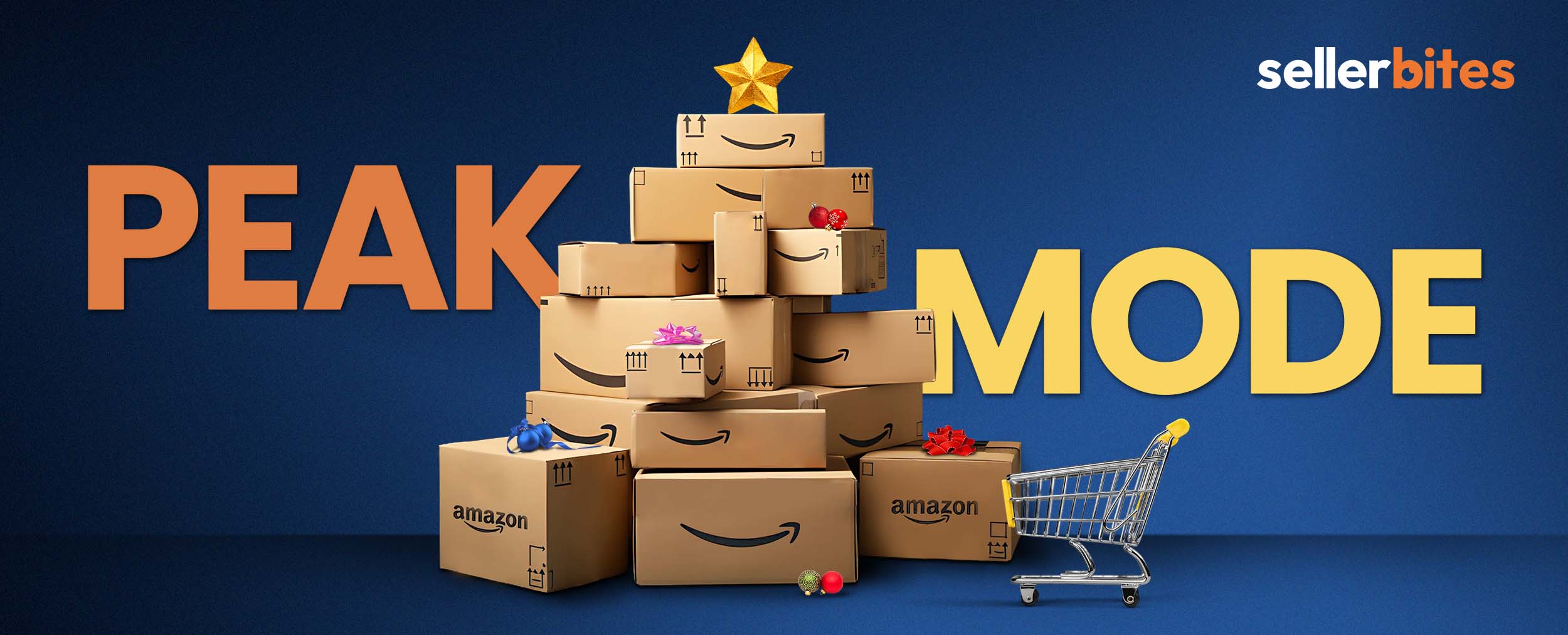Merry Monday.
Are you having a hard time selling on Amazon lately? It’s not just you, though. But you may want to know other ways to boost your sales through other means—like the ones we share with you today.
- U.K. retailers vs. Amazon 🥊
- How to run a thriving Amazon business 💯
- False decline prevention 🫷
- Dynamic content best practices 💡

BLACK MARKET
Around 35,000 independent UK retailers, led by the British Independent Retailers Association (BIRA), launched a £1 billion (around $1.27 billion) claim for damages against Amazon. This isn't just a minor dispute—this is the biggest retail class action yet!
According to The Guardian, the merchants allege that Amazon has been pushing them out of its marketplace.
🔴 What's got the retailers so riled up?
They claim that Amazon's 30% commission on every product sold is already squeezing out small retailers. Additionally, they claim Amazon has been playing dirty since 2015 by:
- Using non-public data from independent retailers to launch competing products
- Manipulating the coveted Buy Boxto favor its items over those of the smaller sellers.
BIRA plans to file over 1,150 pages of documents supporting its claims in London’s competition appeal tribunal. 🗂️
Meanwhile, Amazon dismisses these claims as baseless. The company emphasizes that its platform supports over 100,000 small and medium-sized businesses in the U.K., contributing to more than half of all physical product sales. According to Amazon, they only succeed when their selling partners succeed.
Not a first for Amazon
The retail giant also faced similar scrutiny from the U.K.’s Competition and Markets Authority (CMA) and the EU Commission. This led to commitments for fairer competition and restrictions on using third-party data unfairly.
As this legal saga unfolds, it’s clear that the outcome will be significant for the U.K.’s retail sector. For now, we can keep our fingers crossed and hope for a fairer marketplace. Stay tuned for further updates. 👀

TOGETHER WITH EZ-COMMERCE
Ready to run a thriving Amazon business?

As Amazon tightly clings to its crown as the ecommerce king, many embark on becoming successful ecommerce entrepreneurs.
If you're one of these aspirants, you should first understand the difficulties you'll face, including securing a sufficient initial investment and mastering the technical aspects of online retail.
Initial investment
Starting an Amazon business requires a substantial financial investment, especially in the first year.
Here’s the estimated capital needed to cover all aspects of setting up and running an online store:
- Inventory: $500 to $1,000, depending on the product type and quantity
- Amazon fees: Enough to cover referral, fulfillment, and storage fees. You can go for self-fulfillment options instead of FBA, but you should be prepared to cover the cost (and probably stress) of storing, packing, and shipping products yourself.
- Marketing and advertising: Starts at $100 for an initial PPC campaign (could be more if you recruit the help of influencers).
- Tools and services: Hundreds to a couple thousand, depending on how many tools, external services (like graphic design), and subscriptions you use.
- Emergency fund: Like personal expenses, a good rule is to keep enough to sustain 3 months of operation without income.
Learning the tech stuff
Mastering the technical aspects of running an Amazon business is another significant hurdle. The platform requires you to gain knowledge on how to:
- Optimize listings, including understanding Amazon’s A9 algorithm
- Navigate Amazon Seller Central and FBA (if you choose this over the self-fulfillment options)
- Analyze data and trends (KPIs, ROI, customer acquisition costs, etc.)
- Comply with and monitor Amazon’s rules, regulations, and policy updates
So, are you ready to run a thriving Amazon business?
We sure hope you are. The sooner you begin your Amazon journey, the faster you can polish your strategy to become a better seller.
If you’re not 100% prepped, don’t worry! There’s EZ-commerce—a trusty partner that can help scale and transform your brand into an Amazon success story.
Click on the link below to learn more. 👇
I want to be the next Amazon success story!

BITES OF THE WEEK
- Gen Z Things: Here’s what you should know about Gen Zs’ spending habits.
- Top Tools: Did you know choosing the right digital marketing tools is enough to keep you competitive without breaking the bank?
- Drone Wars: Who do you think will dominate drone delivery first, Walmart or Amazon?

HOT TOPIC
5 steps to prevent false declines

Have you ever heard of false declines?
The Future of Ecommerce defines them as legitimate orders mistakenly rejected due to suspected fraud. They’re also called “false positives,” which is the opposite of what buyers who experience them feel.
🚩False declines lead to:
- Loss of revenue due to missed sales;
- Loss of loyalty due to bad customer experience, with 42% eventually boycotting brands; and
- Deteriorating brand reputation, especially when shoppers share feedback online.
Of course, buyers aren’t the only problem if you commit false declines. Marketers and influencers might refuse to work with your brand if you’re frequently reported for rejecting orders.
So, how do you avoid false declines?
- Benchmark false decline and fraud rates by market and platform through the help of data and tools. Then, you can set your benchmarks to help you control your numbers.
- Tailor screening rules: Customize fraud rules for each market and platform to avoid unnecessary declines. For example, new social accounts or email addresses may be a red flag for existing or mature markets.
- Recruit the help of an expert to review orders. This would help lower false decline rates caused by automated decisions.
- Respond to complaints—promptly and accurately.
- Track your data to check if your strategies are effective and make timely adjustments if necessary.
💉 Prevention is better than cure
After all, it’s easier to have safeguards against negative customer experiences than to re-engage and re-convince customers.

SELLER REFRESHER
Why you should use dynamic content for your business

Imagine if every customer visiting your online store felt like it was made just for them. That would definitely boost your sales and fame, right?
Well, here’s the good news: you can achieve that through dynamic content! ✨
Dynamic content refers to webpage content that changes based on the user’s data, location, behavior, or preferences. According to eCommerce Fastlane, this makes shopping a more personal and exciting experience for everyone.
🔍 Here are some types of dynamic content you can use to enhance your website:
- Personalized recommendations: Suggest items based on what customers viewed or bought before.
- Contextual offers: Provide special deals based on the customer’s location or time of day.
- Interactive elements: Engage shoppers with fun quizzes or surveys to guide them to the right products.
- Real-time updates: Display live social media feeds or news updates to show your business is active and relevant.
Some things to remember
If you’re convinced that you need to add dynamic content to your site, make sure to keep these best practices in mind:
- Protect customer data. Make sure you use, share, and collect data while complying with regulations.
- Start small and let your content grow naturally. Avoid overwhelming viewers with too much dynamic content upfront (which can be complex and costly).
- Update the content regularly. Monitor what works best and ensure the content remains relevant. Make sure you also optimize your dynamic content for mobile.
📝 Last reminder: Always think of your customers when creating content—especially how to engage them. Why having dynamic content can be useful, it still depends on how you can make every customer feel unique and special.








